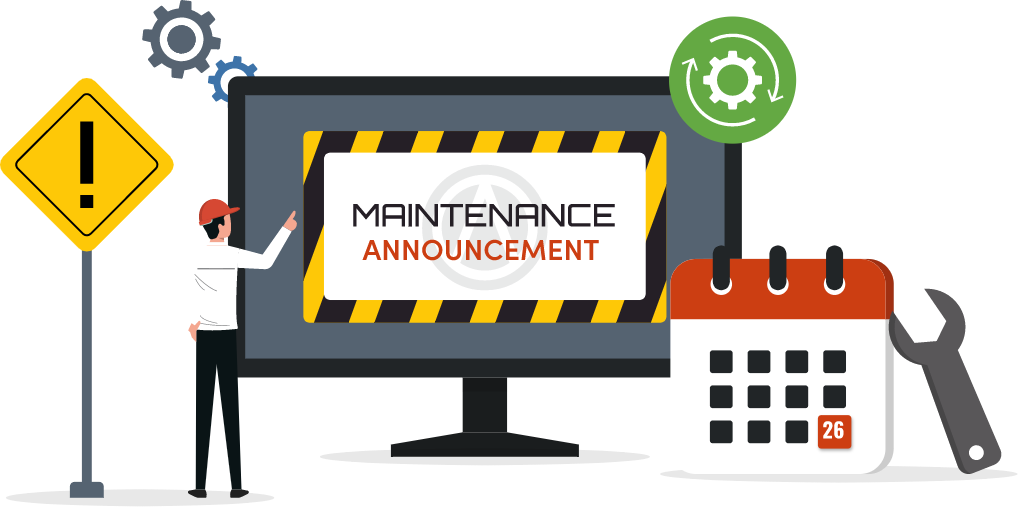How does overtime work in California restaurants?
Employees are entitled to 1.5x pay for hours over 8 per day or 40 per week, and 2x pay for hours over 12 per day or for work on the seventh consecutive day. Both daily and weekly thresholds must be considered.
California Employee Rights Every Restaurant Owner Needs to Know
Overview
Running a restaurant in California comes with more than just the challenge of serving great food - it also means navigating one of the most complex labor law environments in the country. Employee rights in California go beyond federal requirements, and staying informed isn't optional. The state imposes stricter rules on wages, overtime, breaks, sick leave, and workplace protections, and these directly impact how restaurants operate day to day.
For restaurant owners, compliance is about more than avoiding fines or lawsuits - it's about building a workplace where employees feel respected and valued. Studies consistently show that restaurants with fair scheduling practices and transparent pay policies experience lower turnover, higher productivity, and better customer service. In a state where turnover in food service often exceeds 100% annually, protecting employee rights can actually become a competitive advantage.
Minimum Wage in 2025

California has long led the nation in pushing minimum wage increases, and 2025 is no exception. As of January, the statewide minimum wage for most employers has risen to $16 per hour, with certain cities and counties mandating even higher rates. For example, Los Angeles, San Francisco, and Berkeley have local minimums that surpass the state baseline, meaning restaurant owners in these areas need to account for wages closer to $17 or $18 per hour - or more.
For restaurant operators, this isn't just a compliance issue - it's a budgeting reality. Labor already accounts for 25-35% of restaurant operating costs, and every wage increase can significantly impact margins. Owners need to anticipate these expenses not just in payroll, but also in related costs such as payroll taxes, overtime rates, and benefits.
It's also important to remember that California does not allow a "tip credit" against minimum wage, unlike some other states. That means tipped employees, such as servers and bartenders, must receive the full minimum wage in addition to any tips they earn. For owners, this creates a need to carefully balance labor schedules while maintaining service standards.
The best way to adapt is through proactive planning. Updating menu pricing, analyzing staffing needs by shift, and investing in technology to track labor costs in real time can help offset rising wages. While wage hikes can feel like a burden, they also contribute to employee satisfaction and retention - two critical factors in reducing costly turnover. When approached strategically, compliance with California's minimum wage laws can be both manageable and beneficial for your restaurant.
Overtime Rules
California's overtime laws are among the strictest in the nation, and they can easily trip up restaurant owners who rely on flexible schedules and long shifts. Unlike federal law, which requires overtime only after 40 hours in a week, California enforces overtime based on both daily and weekly thresholds. This means restaurant employees are entitled to -
- 1.5 times their regular rate after 8 hours in a single day or 40 hours in a week.
- Double time after 12 hours in a single day, and after 8 hours on the seventh consecutive day of work in a week.
For restaurants that experience unpredictable rushes or rely on split shifts, these rules can create unexpected payroll spikes. A line cook scheduled for a 10-hour shift twice a week, for example, generates overtime even if their weekly total is under 40 hours. Many owners mistakenly assume weekly totals are all that matter - an error that can result in expensive back pay claims and penalties.
According to the California Department of Industrial Relations, wage and hour violations are among the most common complaints filed by restaurant employees. Not only can noncompliance lead to financial penalties, but it can also damage morale if staff feel they're not being fairly compensated.
The most effective way to stay compliant is to use scheduling and payroll systems that automatically flag
overtime risks before shifts are approved. Pairing this with clear communication to managers about scheduling limits helps prevent mistakes. By treating overtime compliance as part of operational planning - not an afterthought - restaurant owners can protect their bottom line while maintaining trust with employees.
Meal and Rest Break Requirements
In California, meal and rest break laws are some of the most employee-friendly in the country, and restaurants are often the first to feel the pressure of compliance. The rules are straightforward but strict - employees who work more than 5 hours in a day must receive a 30-minute unpaid meal break, and if they work over 10 hours, they're entitled to a second meal break. In addition, employees must receive a 10-minute paid rest break for every 4 hours worked or major fraction thereof.
What makes this especially challenging for restaurant owners is timing. Breaks need to be scheduled within specific windows - for instance, the first meal break must generally be provided before the end of the fifth hour of work. If a break is missed, late, or interrupted (like being called back to help during a rush), the employer owes the employee an extra hour of pay at their regular rate. Over time, these premium pay penalties can add up quickly.
Restaurants often struggle with compliance during peak hours when every hand is needed in the kitchen or on the floor. However, California law is clear - business demands don't excuse missed breaks. The best approach is to plan shifts with breaks in mind from the start, staggering schedules so service isn't disrupted.
Training managers to prioritize breaks and using scheduling software to track compliance are practical solutions. While it may seem inconvenient, ensuring proper rest and meal breaks not only keeps your restaurant legal - it helps employees recharge, reducing fatigue, mistakes, and turnover. A well-rested team ultimately delivers better service, which benefits both staff and customers.
Paid Sick Leave and Time Off

Paid sick leave has become a standard expectation in California, and as of 2025, the requirements for restaurant owners have expanded. Under state law, employees must accrue at least one hour of paid sick leave for every 30 hours worked, with a minimum of 40 hours or five days per year available. Some cities and counties, like San Francisco and Los Angeles, require even more generous policies, which means restaurant owners need to check both state and local rules to stay compliant.
Employees can use sick leave not only for their own health needs but also to care for a family member or to seek support related to domestic violence, sexual assault, or stalking. Importantly, employers cannot retaliate against employees for using their earned leave. Any action that discourages staff from taking sick time - such as reducing shifts afterward - could be viewed as a violation of their rights.
For restaurants, sick leave often creates scheduling headaches, especially when staff call out last-minute. However, ignoring or discouraging its use is not an option and can result in costly penalties. The best way to manage this is to build flexibility into staffing plans, such as keeping a pool of trained part-time workers or cross-training employees so they can cover multiple roles when needed.
Beyond compliance, offering sick leave supports employee health and customer safety. A survey by the CDC found that nearly 50% of food-borne illness outbreaks in restaurants are linked to sick employees working. By respecting time-off laws, owners not only protect their teams but also safeguard their customers and reputation.
Elevate Food Safety, Simplify Compliance!
Experience Seamless Food Safety with Altametrics!
Anti-Discrimination and Harassment Protections
Creating a safe and respectful workplace is not only a legal requirement in California - it's a cornerstone of running a successful restaurant. State laws set some of the strongest anti-discrimination and harassment protections in the nation, covering a wide range of protected categories, including race, gender, age, sexual orientation, religion, disability, and immigration status, among others. For restaurant owners, this means policies and practices must be free from bias at every stage - from hiring and scheduling to promotions and discipline.
California also has strict requirements for harassment prevention training. Any employer with five or more employees must provide at least two hours of training for supervisors and one hour for non-supervisory staff every two years. This training isn't just a box to check; it equips staff with tools to identify inappropriate behavior and empowers managers to intervene early before small issues escalate into major problems.
The restaurant industry is particularly vulnerable, given its diverse workforce, fast-paced environment, and reliance on tipped employees who interact closely with customers. According to the Equal Employment Opportunity Commission (EEOC), the hospitality sector consistently ranks among the top for harassment complaints. Failing to provide a safe workplace not only risks legal action but also fuels turnover and damages morale.
Restaurant owners can stay ahead by establishing a clear anti-harassment policy, training managers to handle complaints sensitively, and ensuring employees know how to report issues without fear of retaliation. By fostering a culture of respect, owners don't just comply with California law - they build trust and loyalty within their team, which translates into better service and a stronger business overall.
Employee Classification
One of the most confusing areas for California restaurant owners continues to be worker classification. The passage of Assembly Bill 5 (AB5) reshaped how businesses determine whether a worker is an employee or an independent contractor. At the heart of this law is the ABC test, which requires employers to prove three conditions in order to classify someone as an independent contractor -
1. The worker is free from control and direction of the hiring entity.
2. The work performed is outside the usual course of the business.
3. The worker is engaged in an independently established trade or business.
For most restaurants, this means that cooks, servers, bartenders, and even delivery drivers generally do not qualify as independent contractors - they must be treated as employees. Misclassification can lead to significant financial consequences, including back wages, unpaid overtime, penalties, and tax liabilities.
Restaurants sometimes face challenges in this area when partnering with third-party delivery services or hiring gig workers for special events. While these arrangements may seem convenient, restaurant owners must carefully assess whether the workers are truly contractors or if they meet the employee standard under AB5.
The safest approach is to assume that most staff are employees unless there is clear evidence to the contrary. Using payroll systems to handle taxes and benefits correctly reduces risk, while also ensuring workers receive the protections they're entitled to. By prioritizing proper classification, restaurant owners not only stay compliant with California law but also build a fair, transparent relationship with their teams.
Compliance Made Practical
Staying compliant with California employee rights may feel overwhelming, but breaking it down into clear steps makes it manageable. Start by creating an employee rights checklist covering minimum wage, overtime, breaks, paid sick leave, anti-discrimination policies, and proper classification. Keep this checklist updated to reflect both state and local regulations.
Next, ensure your employee handbook clearly communicates these rights. A well-documented policy not only helps staff understand their entitlements but also protects your business in case of disputes. Train managers to recognize potential compliance risks, from missed breaks to scheduling errors, and encourage open communication so employees feel safe raising concerns.
Leveraging technology can make compliance significantly easier. Modern restaurant management platforms, like Altametrics, streamline payroll, scheduling, and labor tracking while automatically flagging potential violations. This reduces human error, saves administrative time, and ensures that labor costs and schedules remain aligned with California laws. By integrating these tools, owners can focus more on running the restaurant while maintaining confidence that they're staying compliant.
Compliance is not just a legal necessity - it's an investment in your workforce and your business's stability. By proactively managing employee rights, restaurant owners can reduce turnover, boost morale, and create a more efficient, professional workplace.
To simplify compliance and gain full visibility into labor costs, scheduling, and payroll, explore Altametrics by clicking "Book a Demo" below.
Must-Read Content

California Overtime Law 2025 Explained for Small Restaurants

Understanding California Work Hour Laws for Hotels

Understanding the California Work Week for Restaurants

A Hotel Owner's Guide to Labor Laws in California










